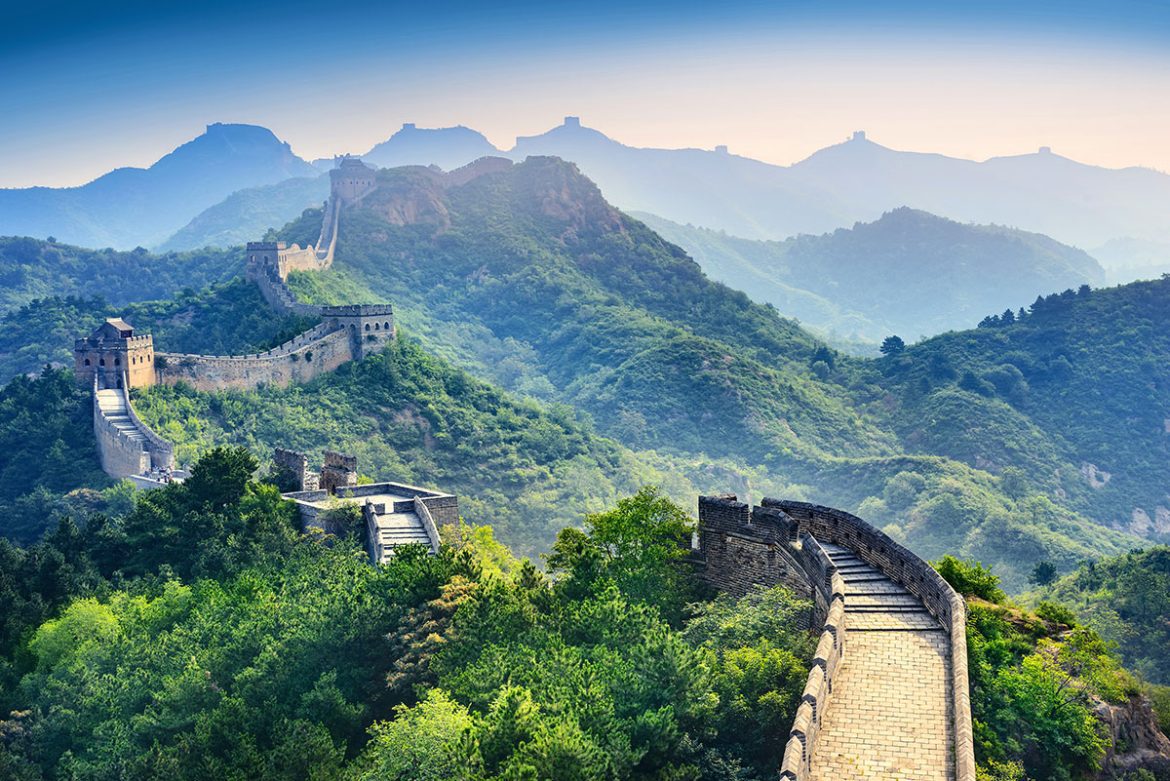Most visitors to China only care about a few tourist attractions: the Great Wall and Forbidden City in Beijing; the Bund in Shanghai; and the Terracotta Warriors in Xi’an. Maybe they will include a trip to Guangzhou or a sail on the Yangtze River. The country of China, however, is not limited to these tourist attractions.
Ancient towns, woods, temples, paddy fields that appear as if they were built by artisans, holy mountains, and magnificent waterfalls are just a few of the many great tourist sites in China. Off-the-beaten-path destinations, where Chinese visitors outnumber foreigners, are becoming more appealing to travelers of all ages. An excellent phrasebook, a large supply of patience, and a fantastic sense of humor are all that a traveler needs.
30. Xi’an City Walls
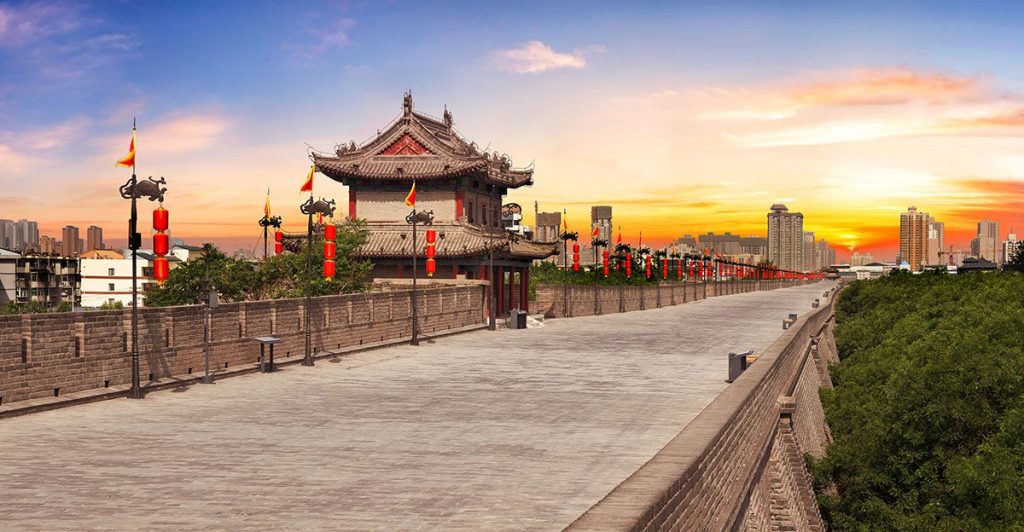
Explore the magnificence of Xi’an’s historic city wall. Image source: mapman/Shutterstock.com
Many Chinese towns were protected by enormous stone walls erected many decades, or perhaps centuries ago. Not even Xi’an was spared. The wall around this city is one of China’s best surviving examples of its kind. The height of the wall is 12 meters (40 feet); the width is roughly 15 meters (50 feet); and the height is gradually narrowed to 12 meters (40 feet) at the top. Travelers visiting China’s historic capital should not miss the opportunity to walk along this wall.
29. Three Pagodas
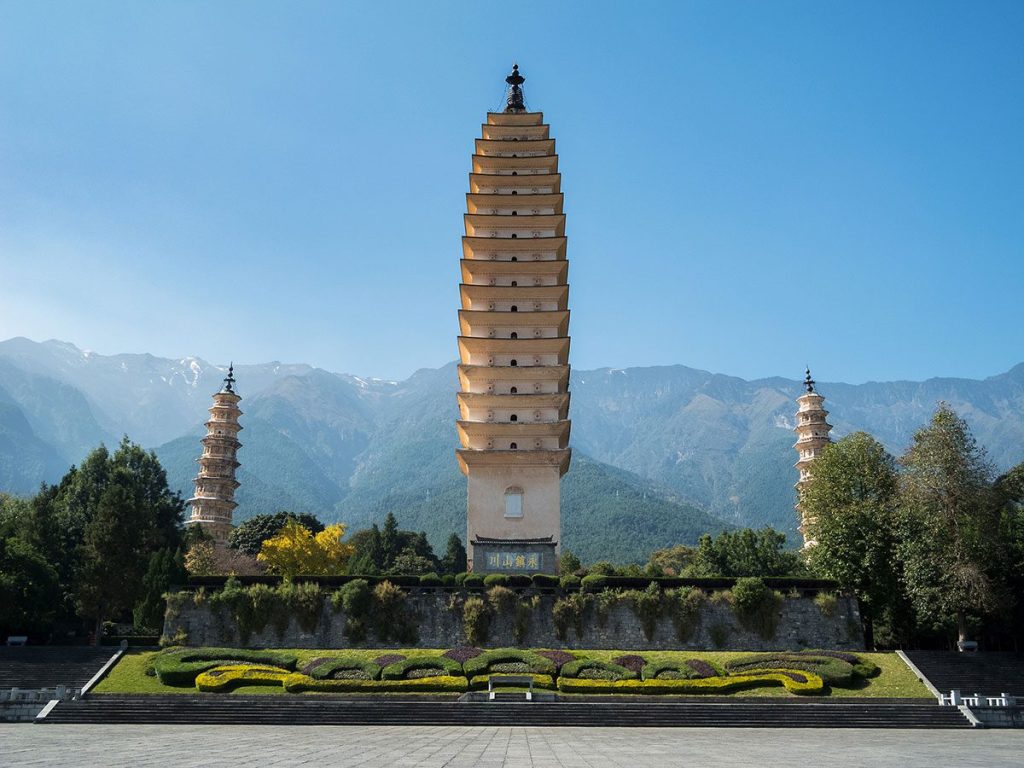
Admire the grace and serenity of the Three Pagodas in Dali. Image source: Muellek/Shutterstock.com
One of the finest surviving Buddhist buildings in China, the Three Pagodas are located approximately a mile to the northwest of the old city of Dali in southern China. The central pagoda stands at an impressive 69.6 meters (227 feet) in height and was commissioned by King Quan Fengyou in 824–840 AD. The construction of the remaining two pagodas occurred around a century later.
28. Zhangjiajie National Forest Park
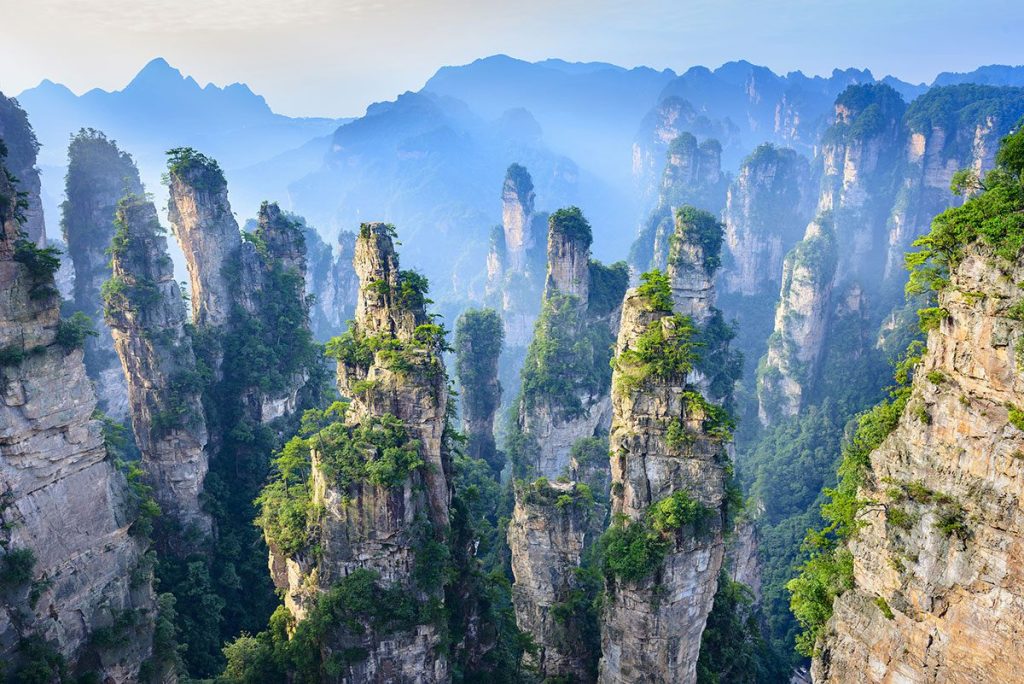
Lose yourself in the enchanting landscape of Zhangjiajie. Image source: aphotostory/Shutterstock.com
The Zhangjiajie National Forest Park is a member of the Wulingyuan Scenic Areas and was the first national forest park in China, opening in 1982. The park is popular all year long due to its crystal-clear streams, bizarrely shaped mountains, rich animals, and lush subtropical flora. The Golden Whip Stream is a must-see because of the vibrant fish life and the clarity of the water.
27. Shilin Stone Forest
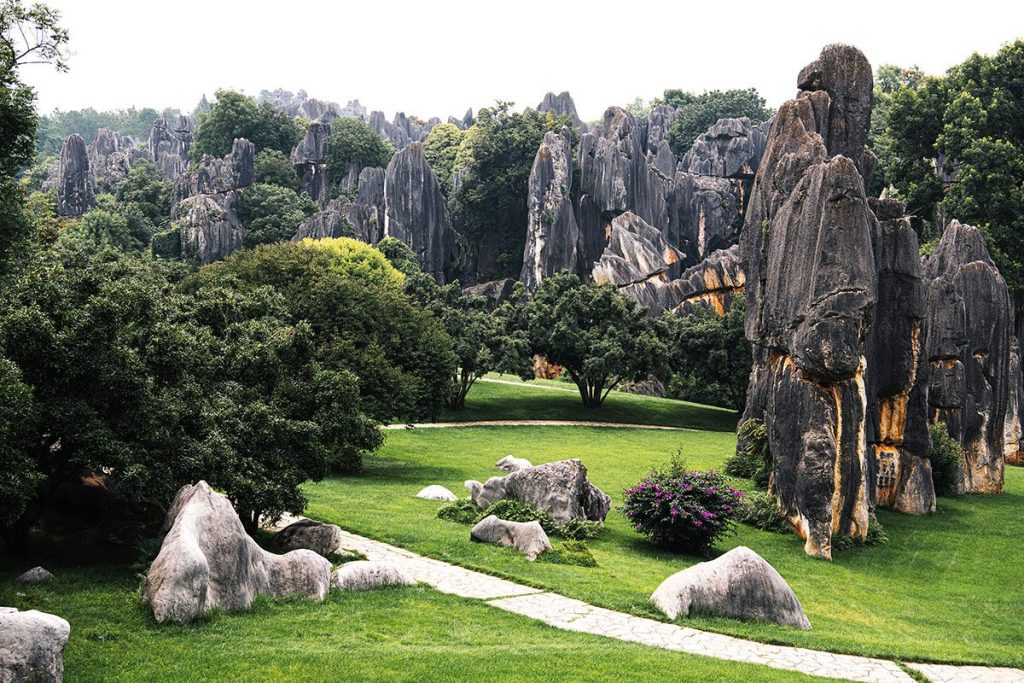
Witness the extraordinary formations of the Stone Forest. Image source: Tatiana_kashko_photo/Shutterstock.com
Southwest China is home to a collection of karst landforms known as the Stone Forest (Shillin). The stones rise like stalagmites from the ground, which is a fitting comparison. Researchers estimate that these rocks are 270 million years old. The region used to be an ocean bottom, and the towering peaks you see now were formed by the movement of water. More than two million people visit the stone forest each year.
26. Lijiang Old Town
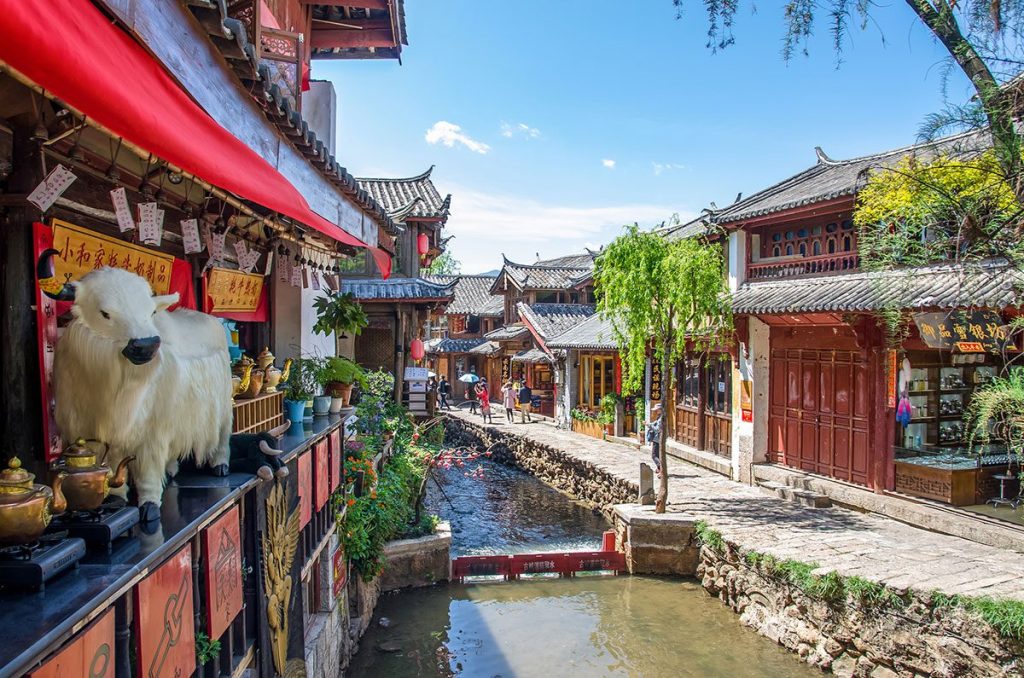
Stroll through the charming streets of Lijiang’s Old Town. Image source: gracethang2/Shutterstock.com
Visitors to Lijiang Old Town, Yunnan Province, often come to get a taste of minority culture. The Naxi minority culture dates back 800 years to when Kublai Khan first called this place home. Approximately three hundred and fifty bridges span the city’s winding canals, providing excellent opportunities to see traditional Naxi architecture and observe locals dressed in traditional garb.
25. Wudang Mountains
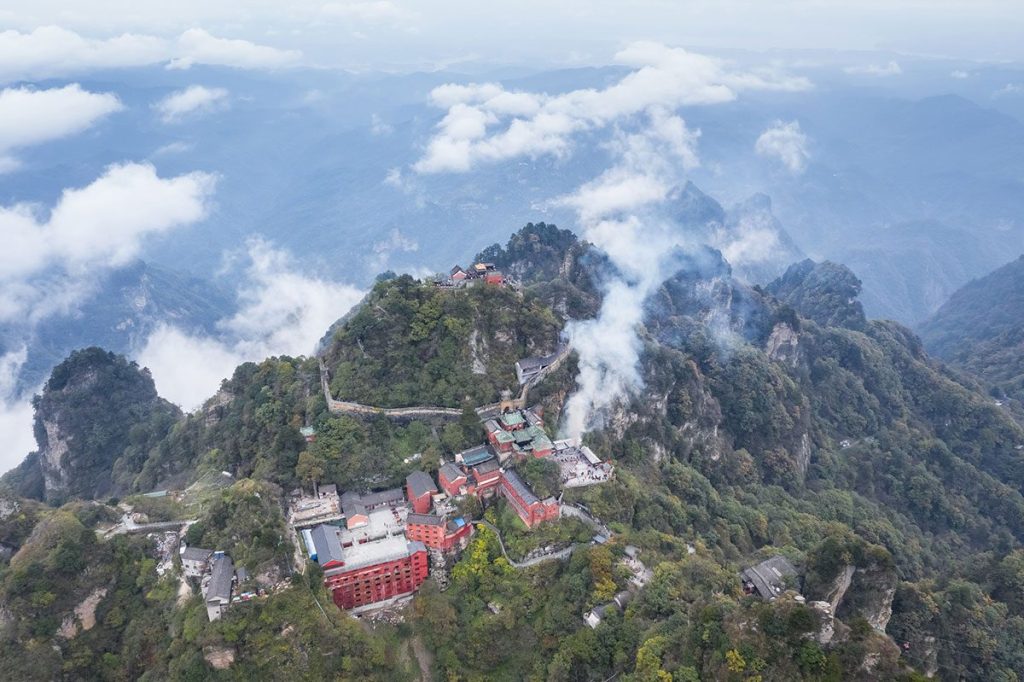
Behold the breathtaking scenery of Wudang Mountain. Image source: chuyuss/Shutterstock.com
The Wudang Mountains, in Hubei Province’s northwest, are breathtakingly featured in Crouching Tiger, Hidden Dragon, so visitors need not be told about their beauty. The Wudang Mountains are the most revered mountains in Taoism and are also among China’s most beautiful landscapes. A number of temples abound in this area, with the grandiose Nanyan Temple—one of Wudangshan’s 36—standing out for its utilization of the cliff behind it as construction material.
24. Zhouzhuang
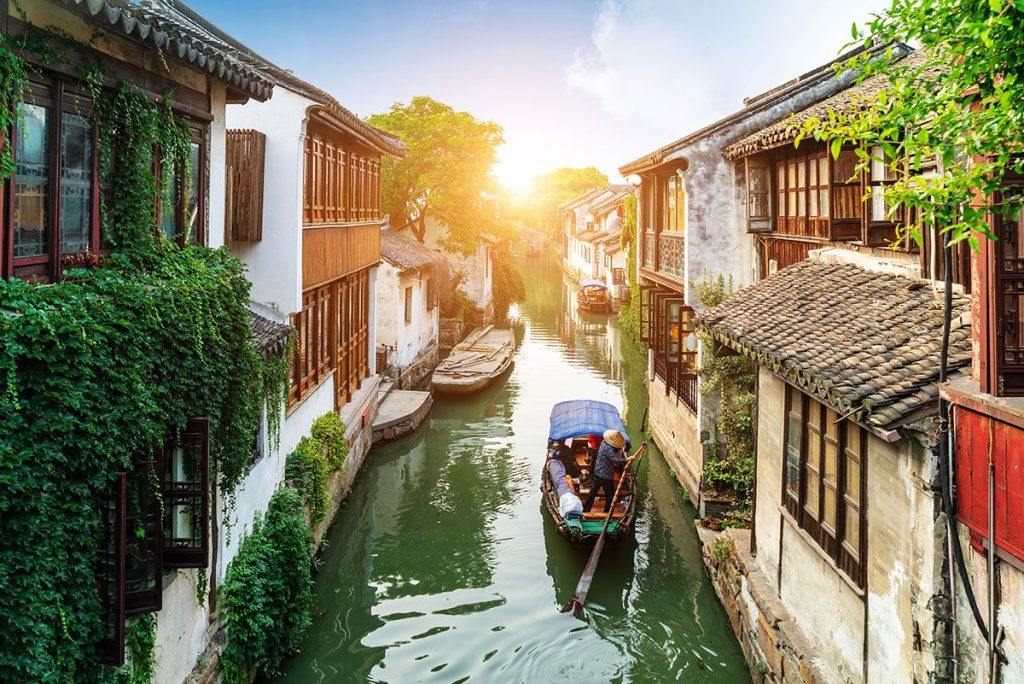
Discover the charm of Zhouzhuang’s ancient water town. Image source: gyn9037/Shutterstock.com
To this day, Zhouzhuang is one of China’s most renowned water villages. The town is known as the “Venice of the East” due to the fact that its rivers and streams are intertwined with historic buildings. Zhouzhuang is a city in eastern China, less than 32 kilometers (20 miles) from Suzhou, and is most known for its twin bridges, Shide and Yongan. It’s possible to get an excellent view of the city from the water.
23. Mount Tai
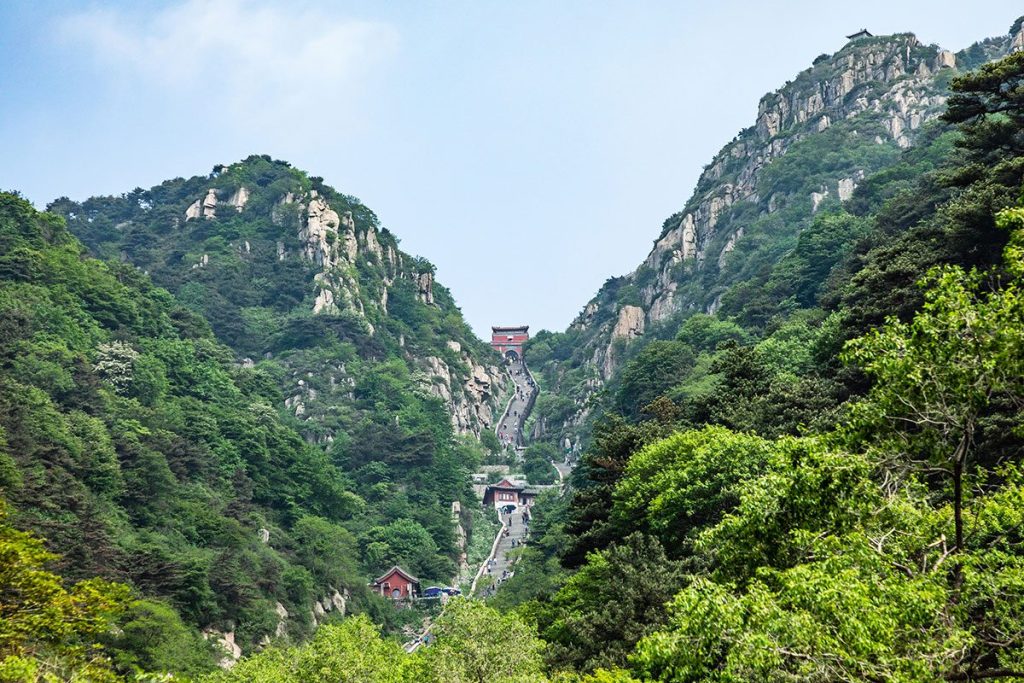
Marvel at the scenic splendor of Taishan. Image source: daizuoxin/Shutterstock.com
One of China’s five sacred mountains, Mount Tai, may be found in Shandong Province. There were said to be 72 emperors who all climbed Taishan (which means “shan” in Mandarin). They abandoned impressive temples, tablets with writing on them, and other remnants of their civilization. The 6,000-step eastern path is the one used by the emperors, so those who want to feel like a king or queen should take it.
21. Tiger Leaping Gorge
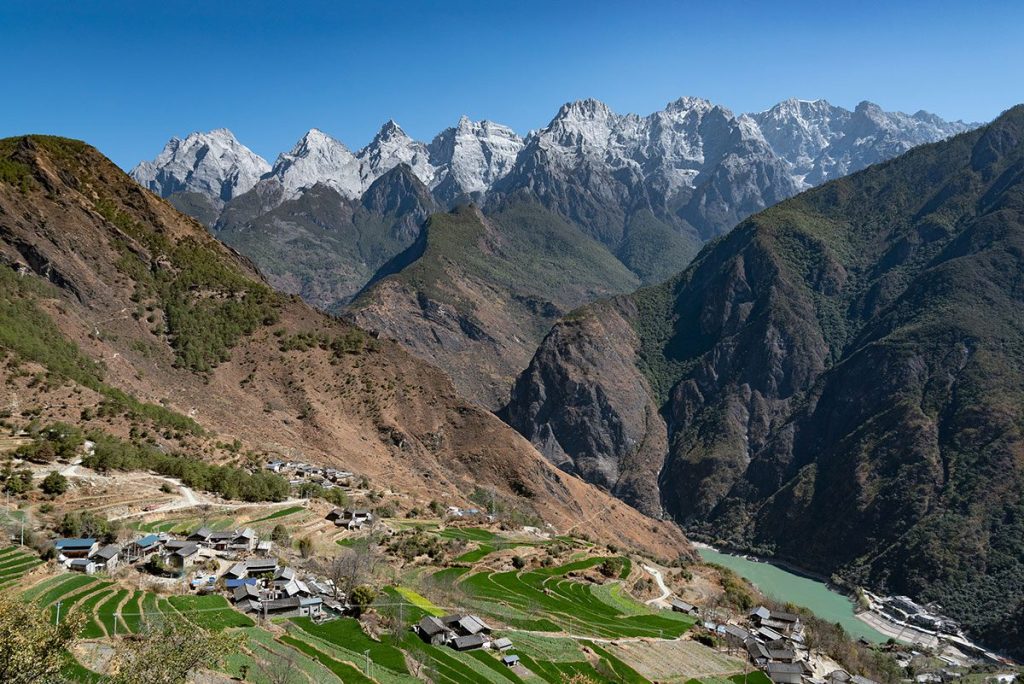
Stand in awe of the majestic Tiger Leaping Gorge. Image source: 52691989/Shutterstock.com
Southwestern China is home to the Yangtze River and the spectacular Tiger Leaping Gorge. The canyon, which is around 15 kilometers (9 miles) long, winds its way through a succession of rapids and is flanked on both sides by mountains that soar more than 3,000 meters (10,000 feet) above the river. Depending on the criteria used, it is likely the deepest canyon in the world. One of the most accessible and rewarding hiking trails in China, the gorge hike offers spectacular views and a sense of adventure. The ascent should not be taken lightly. It’s an exercise that may be damaging to the knees, even for individuals who are in quite decent condition. Hikers won’t need a tent since they can stay at guesthouses along the trail.
21. Suzhou Gardens & Canals
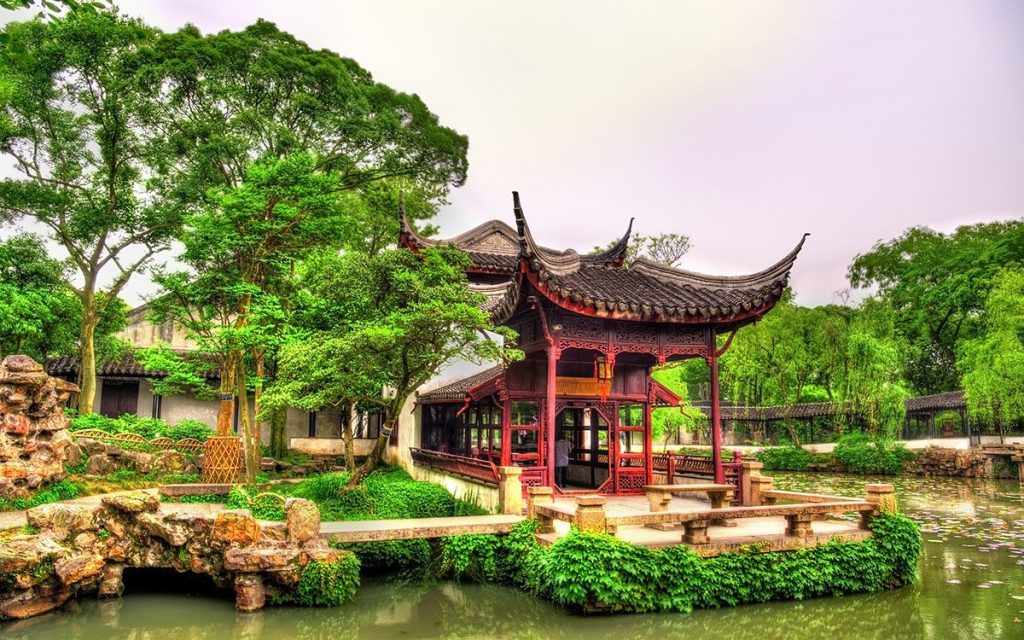
Find serenity in the enchanting Humble Administrator’s Garden. Image source: Leonid Andronov/Shutterstock.com
Approximately 65 kilometers (40 miles) from Shanghai, the city of Suzhou is a beautiful destination on the Grand Canal. The city’s silks, as well as its canals and classical gardens with their fish ponds and rockeries, have brought it worldwide renown. The Humble Administrator’s Garden is one of the most well-known of Suzhou’s about 80 traditional gardens. One of the best ways to take in all of Suzhou’s finery is on a boat trip around the city’s canals.
20. Mogao Caves
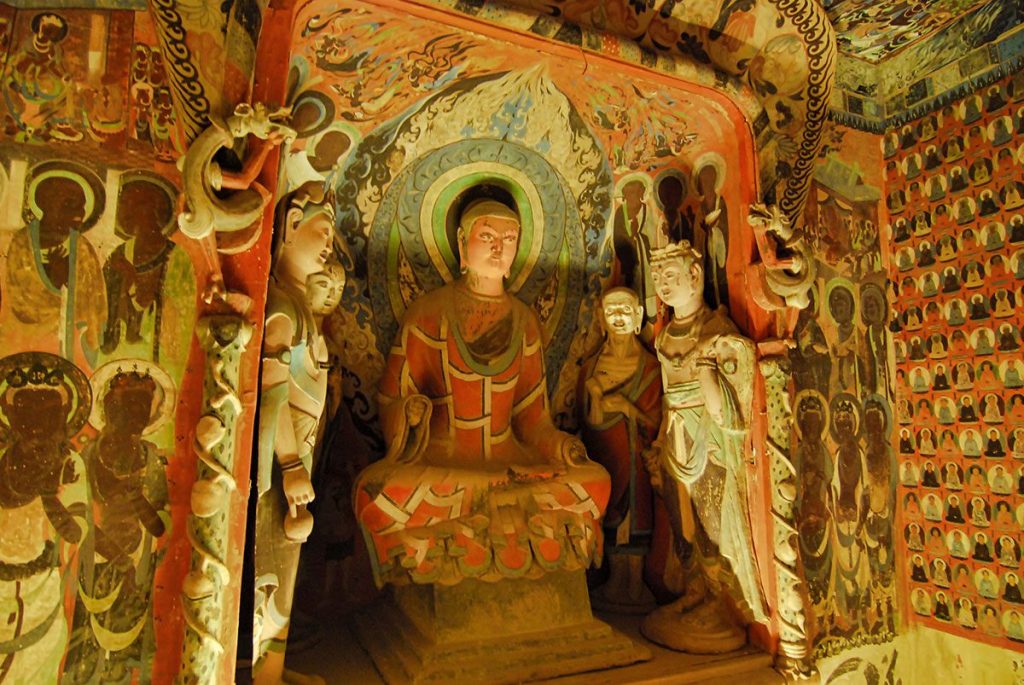
Journey into the mesmerizing world of the Mogao Caves. Image source: Marcin Szymczak/Shutterstock.com
The Mogao Caves in Dunhuang are an important stop for anybody traveling the historic Silk Road, since they include some of the earliest examples of Buddhist cave art. The Buddha statues were hewn out of the hillsides at the Yungang Caves, whereas paintings were painted on the cave walls in the Mogao Grottoes. The oldest paintings in this collection were created in the fourth century. There were once more than a thousand of these underground worship centers.
19. Longji Terraces
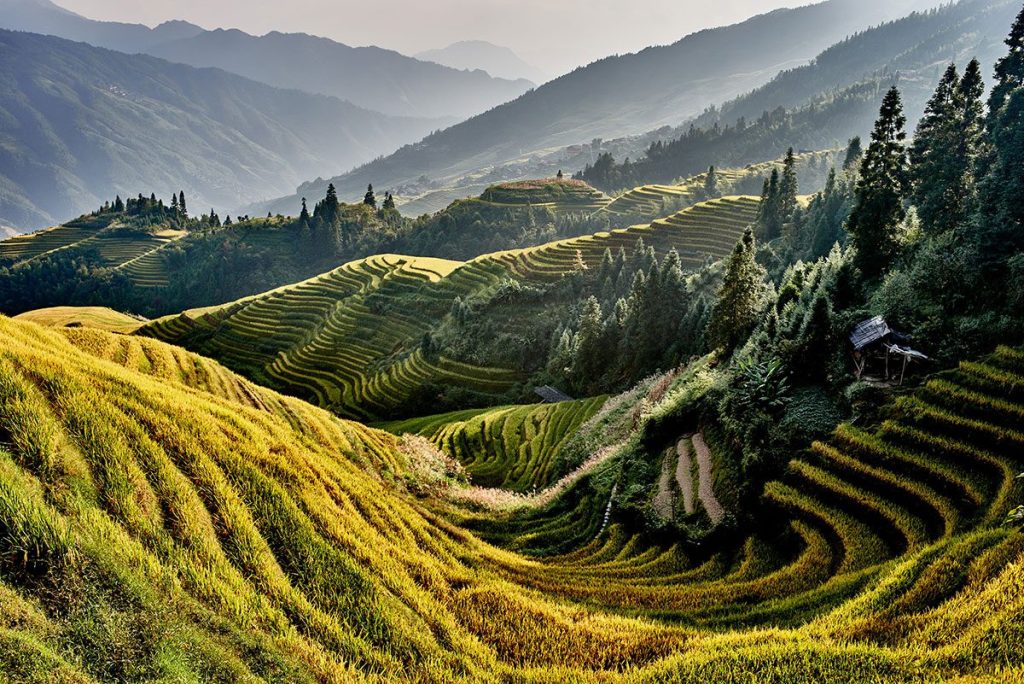
Behold the breathtaking beauty of Longji’s rice terraces. Image source: OSTILL is Franck Camhi/Shutterstock.com
More than five hundred years ago, during the Ming Dynasty, the Longji, also known as the Dragon’s Backbone, rice terraces were constructed. Longsheng, around two hours’ drive from Guilin, is where you’ll find the terrace fields. These terraces, which stretch from the riverside to the foot of the mountains, seem like green braided cables from a distance during the growth season. Tourists may wander through the paddies and towns, passing past horses, pigs, chicks, and hard-working residents.
18. Summer Palace
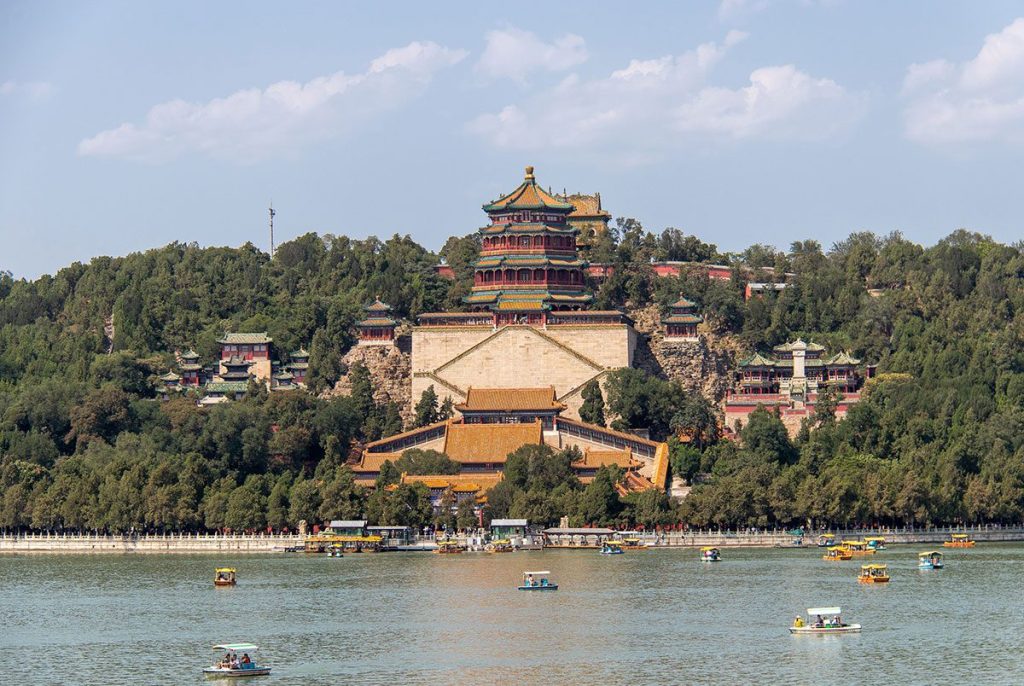
Find serenity amidst the splendor of the Summer Palace. Image source: Couanon Julien/Shutterstock.com
The Summer Palace, in the far northwest of the city, served as a retreat for the Chinese royal family from the city’s oppressive heat. It was built in 1750, but the French and British invasion of Beijing a century later led to its destruction. Empress Cixi embezzled money from the Navy to create the Marble Boat, which is really wood painted to appear like marble. Therefore, its restoration was not without controversy.
17. Yangtze River Cruise
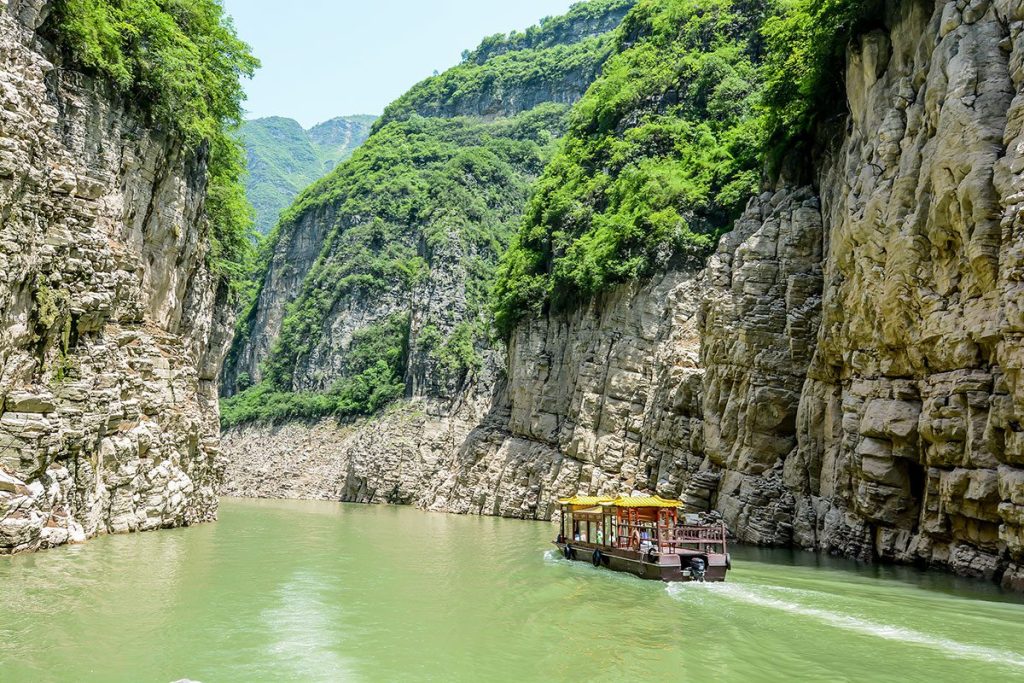
Cruise through the breathtaking Three Gorges. Image source: mark stephens photography/Shutterstock.com
Some of China’s most fascinating and well-known attractions, such as the breathtaking Three Gorges, may be found along the Yangtze River. Cruisers on the Yangtze will see some of the most beautiful parts of this vast nation and may even get to stop at some intriguing ports along the way. Several endangered species in China call the Yangtze River home, including the Chinese alligator and river dolphin.
16. Hanging Monastery
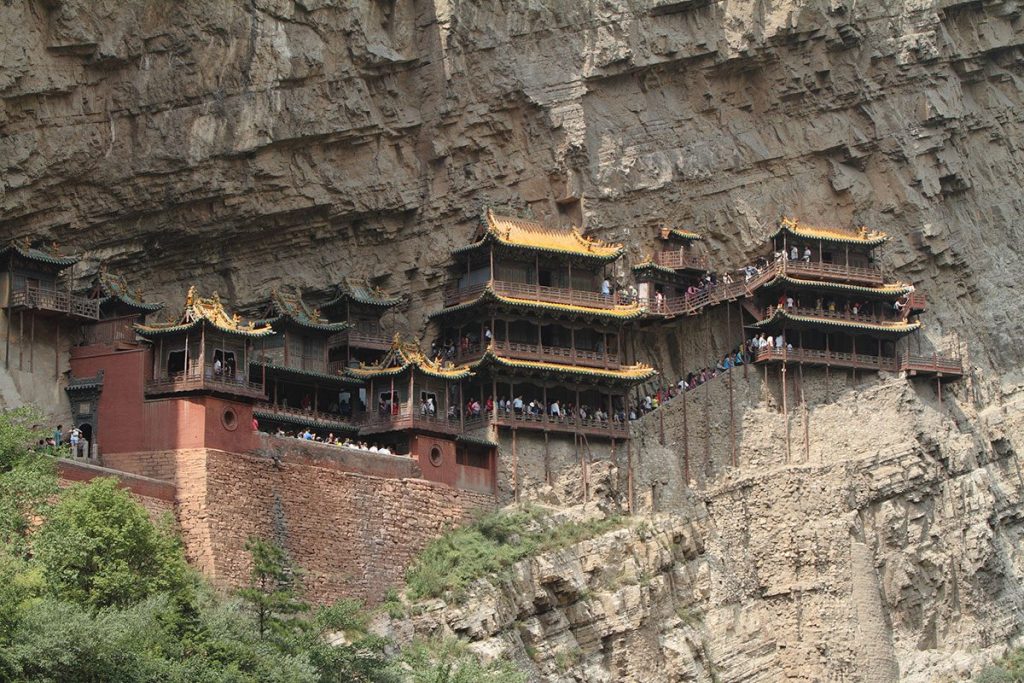
Witness the awe-inspiring Hanging Monastery. Image source: hecke61/Shutterstock.com
The Hanging Monastery, a UNESCO World Heritage Site, is perched on the edge of a cliff about 75 meters (246 feet) above the earth. This extraordinary monastery, which consists of 40 individual chambers connected by bridges and corridors suspended in midair, seems to be permanently attached to the edge of a cliff. While its initial structure dates back to the 5th century, it has undergone several renovations and expansions since then.
15. Reed Flute Cave
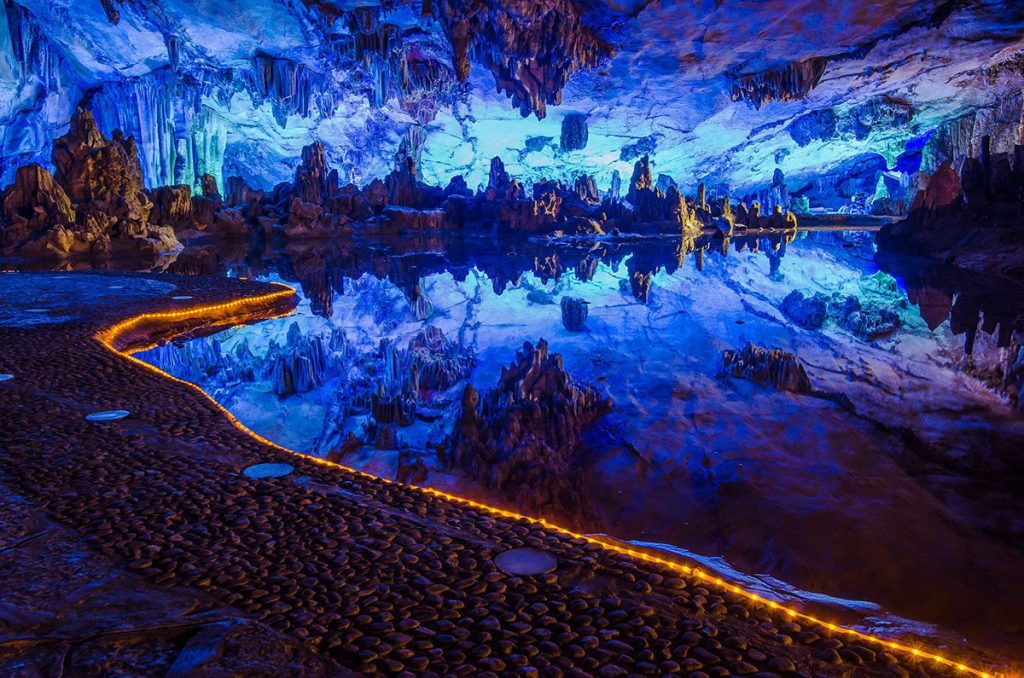
Explore the enchanting beauty of the Reed Flute Cave. Image source: Dene’ Miles/Shutterstock.com
The Reed Flute Cave, also called the Palace of Natural Arts, is located northwest of Guilin in southern China. The reed growing near the cave entrance was formerly used to make flutes, thus the name Reed Flute Cave. The limestone cavern is a wondrous wonderland of grotesquely shaped and colored stalactites, stalagmites, stone pillars, stone curtains, birds, plants, and animals.
14. Yungang Grottoes
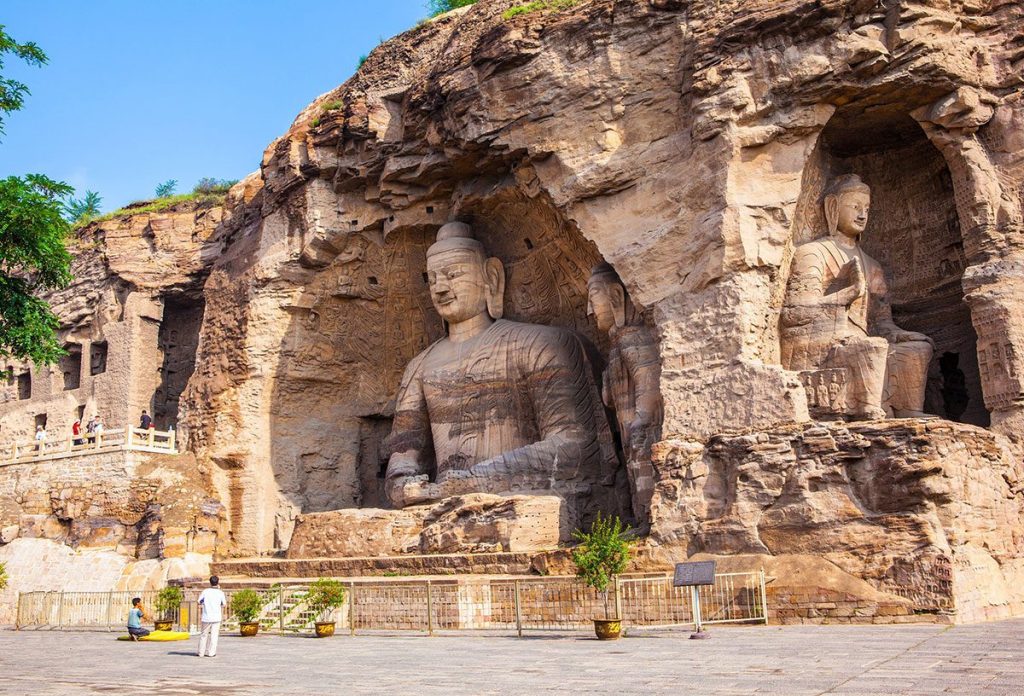
Immerse yourself in the grandeur of the Yungang Grottoes. Image source: Meiqianbao/Shutterstock.com
Some of the most impressive specimens of early Buddhist cave art may be seen at Datong’s Yungang Caves or Grottoes. More than 51,000 figures were carved by monks into the mountainside here, ranging in height from a few inches to tens of feet. In the fifth and sixth centuries, artists worked on the sculptures in the grottoes, which number 252. Travelers who want to avoid the crowds should come during the off season.
13. West Lake
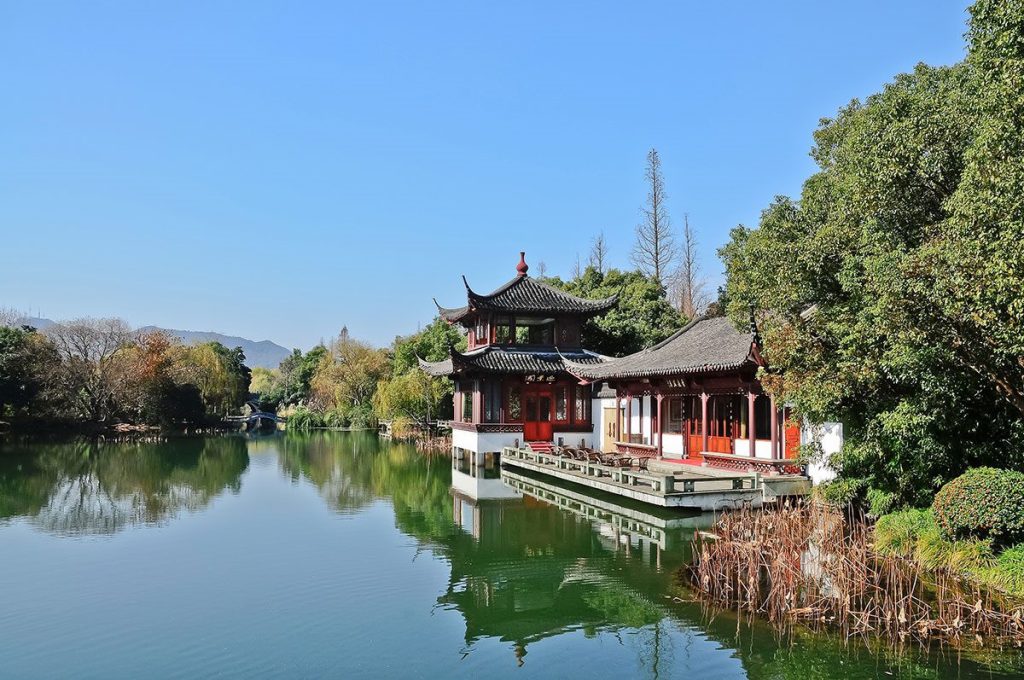
Experience the timeless beauty of Hangzhou’s West Lake. Image source: ABCDstock/Shutterstock.com
Seeing West Lake, a big freshwater lake that serves as the city’s emblem in Hangzhou, Zhejiang Province’s capital, is a must if you’re planning a trip to East China. The lake, which is often no more than five feet deep at any one point, is dotted with forested artificial islands that host temples and pagodas. One of China’s most famous tourist attractions, West Lake, is really a collection of smaller lakes. Formerly, this spot served as an imperial retreat.
12. Jiuzhaigou
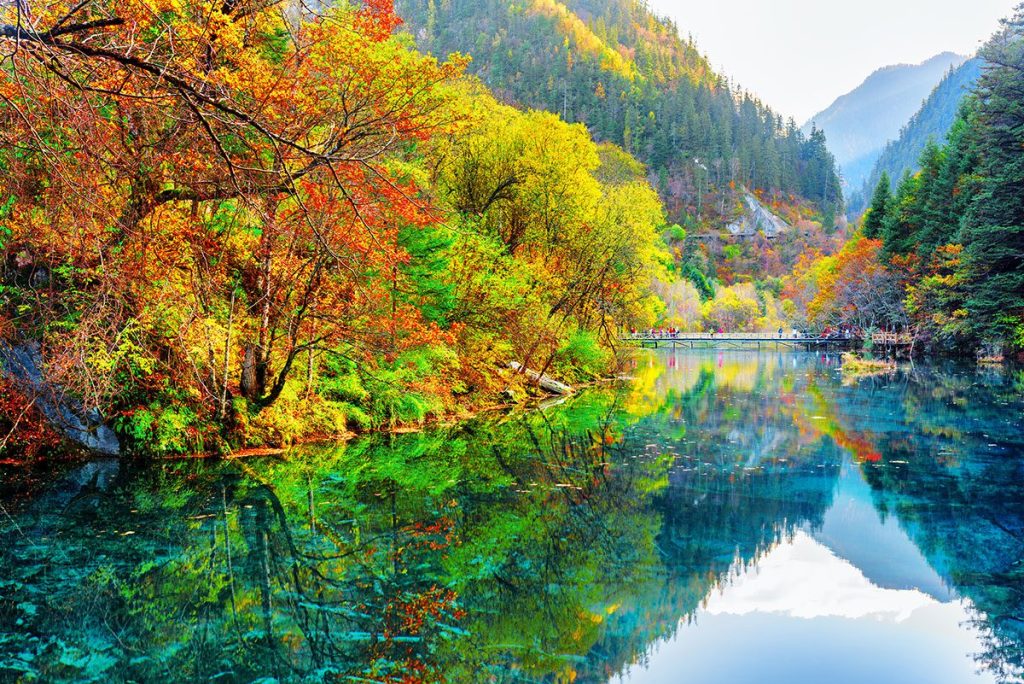
Behold the mesmerizing beauty of Five Flower Lake. Image source: Efired/Shutterstock.com
Jiuzhaigou, often known as Jiuzhai Valley in English, is a natural reserve in southwestern China. Fairytale-like descriptions abound for this national park, which has 108 lakes in all shades of blue, turquoise, and green, with water so transparent that you can see down to the bottom. Giant pandas call this park home as well, but with so many visitors, it’s a long shot you’ll really see one.
11. Longmen Grottoes
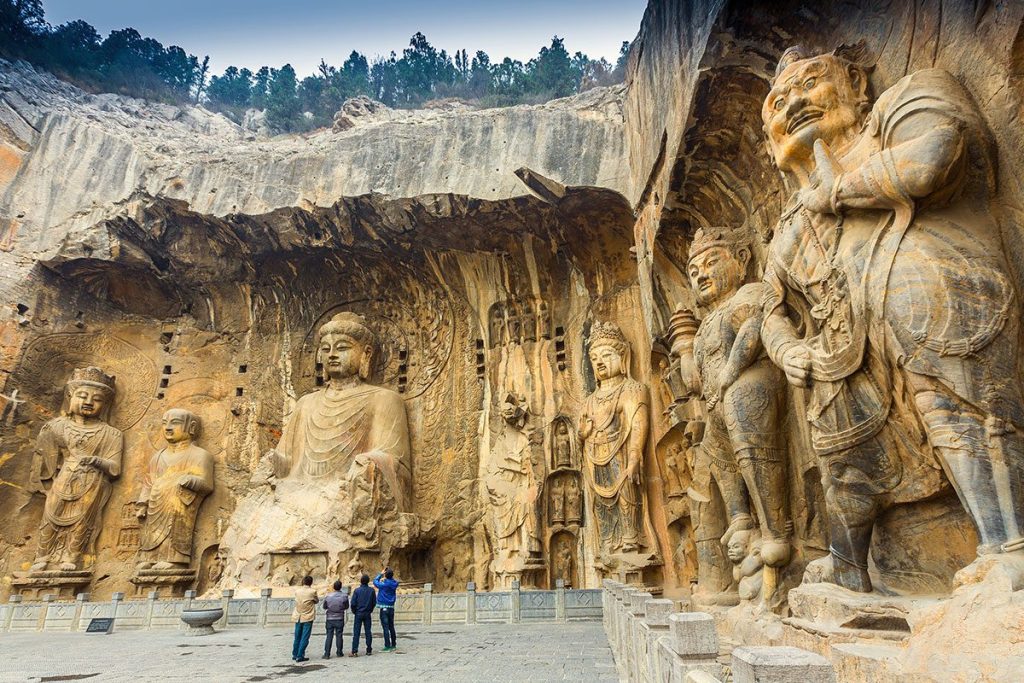
Discover the timeless beauty of Longmen Grottoes. Image source: Blue Sky Studio/Shutterstock.com
In the eastern central part of China, the Longmen Grottoes are spread out along the Xiangshan and Longmenshan mountains. The grottoes were first built around 493 A.D. More than 2100 niches, 100,000 Buddhist figurines, 40 pagodas, and 3,600 tablets and steles are housed in the caverns. The most iconic piece is the 17-meter-tall (56-foot-tall) statue of Vairocana at Fengxian Temple.
10. Pudong Skyline
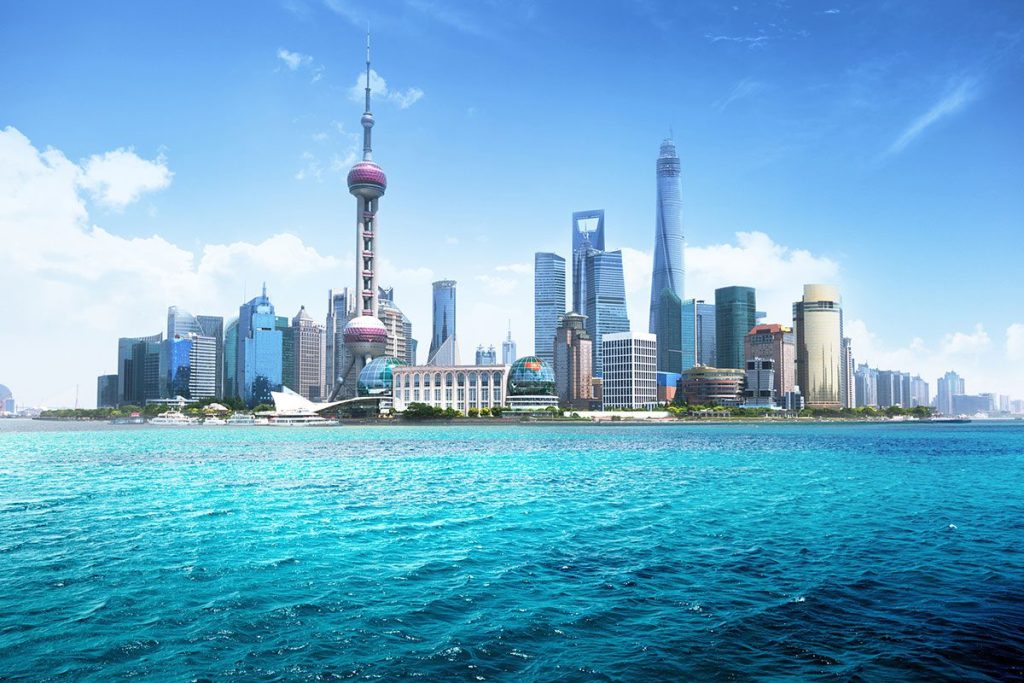
Behold the iconic skyline of Shanghai, bathed in golden sunlight. Image source: Iakov Kalinin/Shutterstock.com
Shanghai’s Pudong neighborhood, located on the river’s eastern bank, has become the country’s financial and economic epicenter. Out of what was once countryside just 20 years ago, a cityscape of glittering buildings has emerged. A few of the tall buildings in Shanghai include the 2014-completed Shanghai Tower, the Jin Mao Building, the Shanghai World Financial Center, and the iconic Oriental Pearl Tower.
9. Hani Terraces
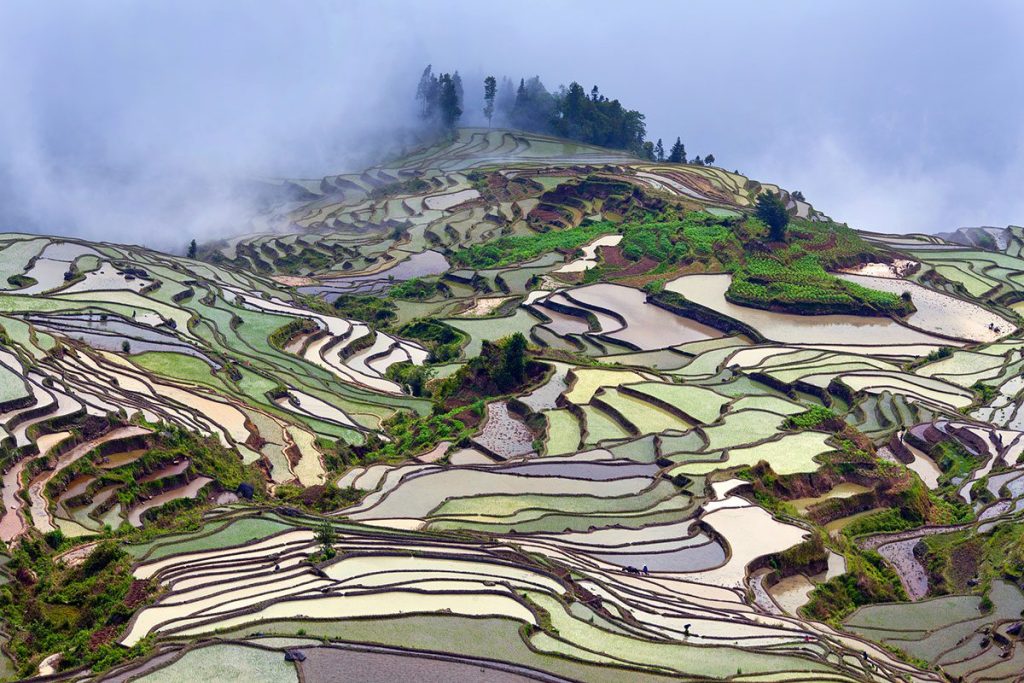
Journey into the picturesque landscapes of Yunnan’s Hani ethnic region. Image source: Storm Is Me/Shutterstock.com
Over a thousand years of farming have taken place in the Hani Rice Terraces on the southern slopes of Ailao Mountain in Yuanyang. These rice terraces, carved by hand by the Hani people, have transformed a bare mountainside into a verdant sub-tropical paradise. The woods atop the hills collect rainwater, which is then piped to the terraces below. From December through March, the rice terraces are flooded, making for a breathtaking sight for visitors.
8. Leshan Giant Buddha
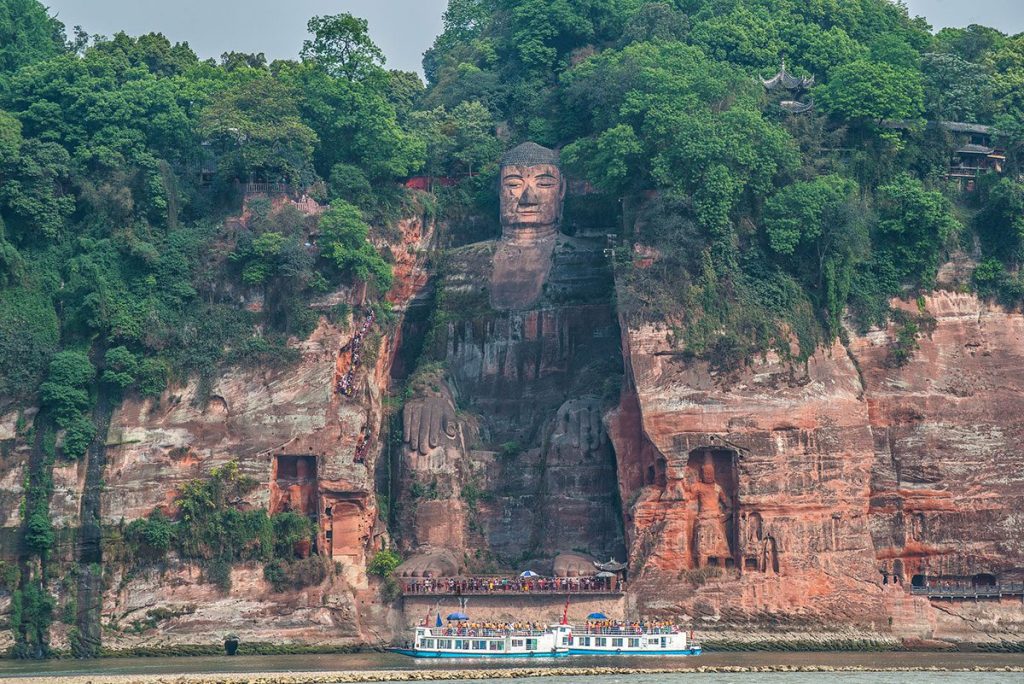
Marvel at the magnificence of the Leshan Giant Buddha. Image source: Tracy ben/Shutterstock.com
It was on Mount Emei that the first Buddhist temple in China was constructed, in the year a.d. The Emeishan Buddhas are all impressive, but the Leshan Great Buddha, hewn from a hillside in the seventh century, stands out as the most impressive of the bunch. Each of the giant hands that lie on top of the monument is around three meters (11 feet) in length, making the whole structure roughly 71 meters (233 feet) tall. The remains of the Giant Buddha were dumped into the rivers below, and they calmed down, making passage easier.
7. Mount Huang
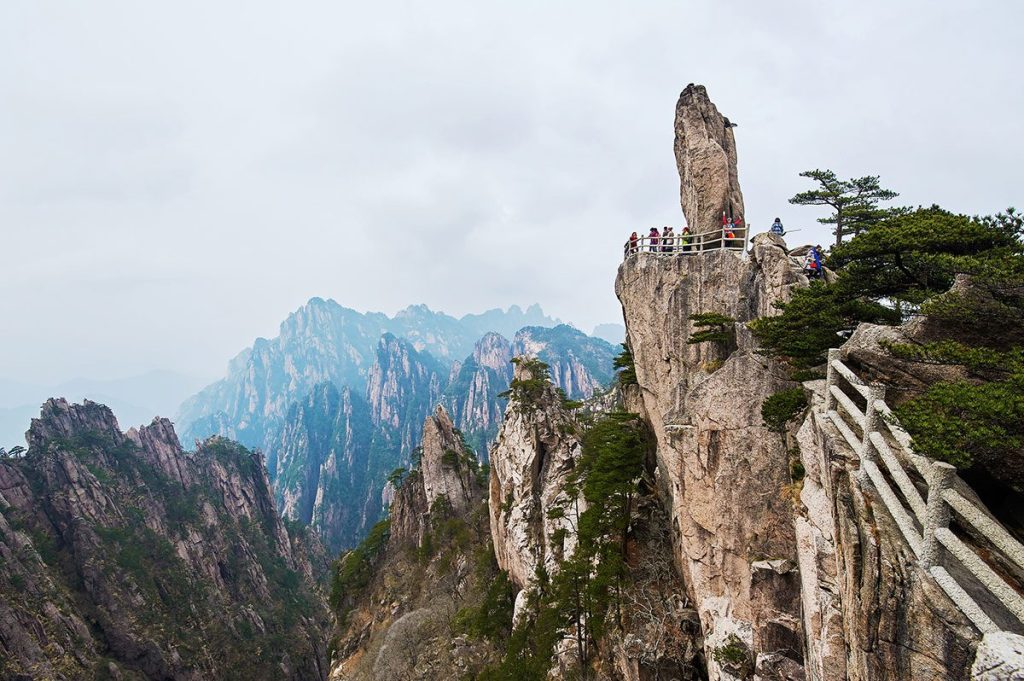
Lose yourself in the breathtaking beauty of Huangshan Mountain. Image source: Dashu Xinganling/Shutterstock.com
Mount Huang, or Huangshan (meaning “Yellow Mountain”), is a mountain range in eastern China that is a popular tourist attraction. Scenery, sunsets, oddly sculpted granite peaks, and aerial views of the clouds have made the region famous. The various, mist-shrouded summits have fantastical titles like “18 Arhats Worshipping the South Sea,” “Lotus Flower Peak,” “Celestial Capital,” and “Painted Brush,” and they often seem to float on clouds. Almost sixty thousand stone stairs were cut into the mountainside in ancient times. Tourists may now take a cable car straight from the base to one of the peaks.
6. Li River Cruise
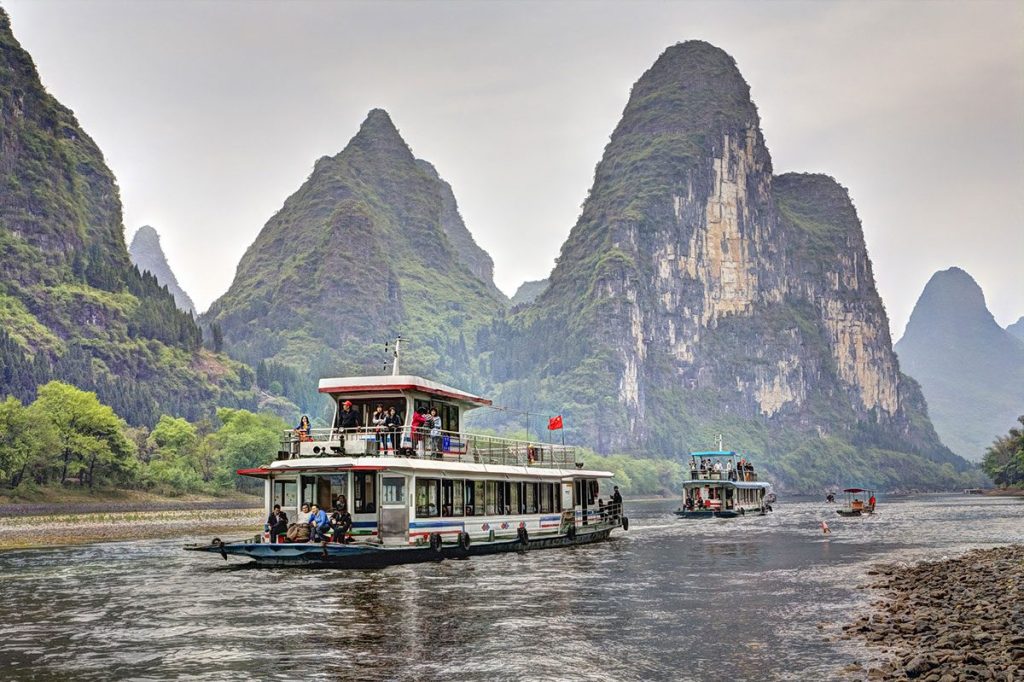
Immerse yourself in the serene landscapes of Yangshuo. Image source: Grigvovan/Shutterstock.com
The highlight of a vacation to northern Guangxi Province is a boat trip down the Li River from Guilin to Yangshuo. One of China’s most popular tourist destinations, the Li River, provides visitors with stunning views and a glimpse into rural life outside of the bustling city. Karst mountains, cloaked in mist, dot the landscape, creating an atmosphere of calm. Cormorants are used by traditional fishing boats as they go up and down the river in search of fish. Taking a boat from Guilin to Yangshuo is the best way to take in the view, and many visitors then ride bicycles back due to the flat terrain.
5. Terracotta Army
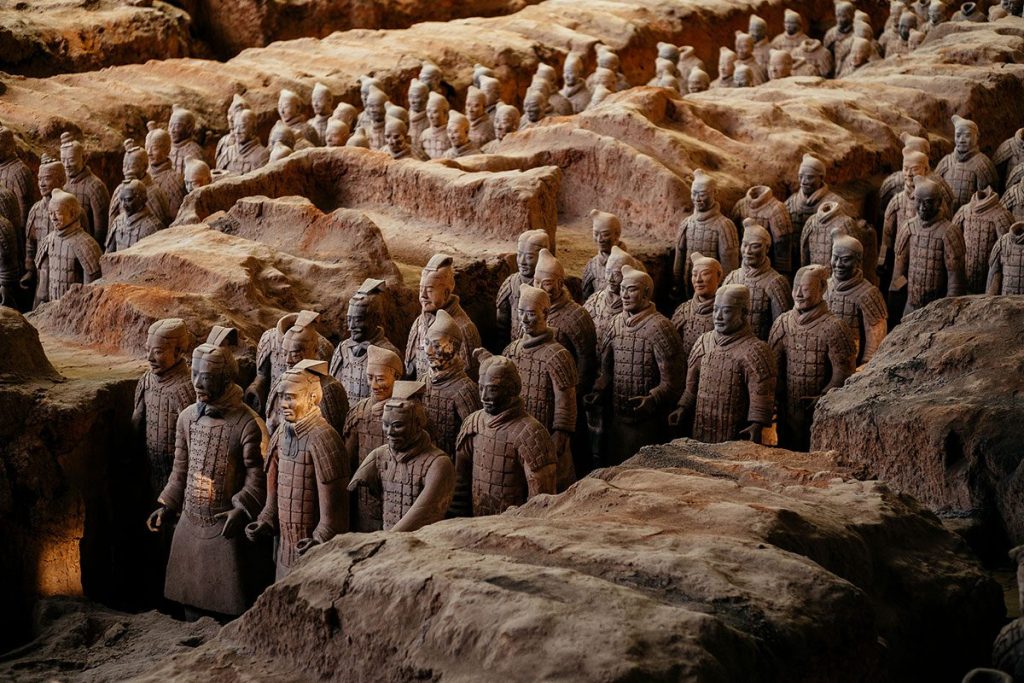
Behold the awe-inspiring Terracotta Army, an archaeological wonder. Image source: costas anton dumitrescu/Shutterstock.com
One of the most well-known archaeological discoveries ever made is a three-vault complex with thousands of lifelike terracotta soldiers and horses. It’s Xian’s (and China’s) top draw for tourists. More than two thousand years have passed as the 8,000 realistic terracotta soldiers and 130 or so chariots have stood guard over the spirit of China’s first unifier. The fact that no two soldier faces are identical, in spite of the theft of the weapons and the extensive fading of the coloring, is a monument to the amount of effort and talent involved in their fabrication.
4. Victoria Harbour
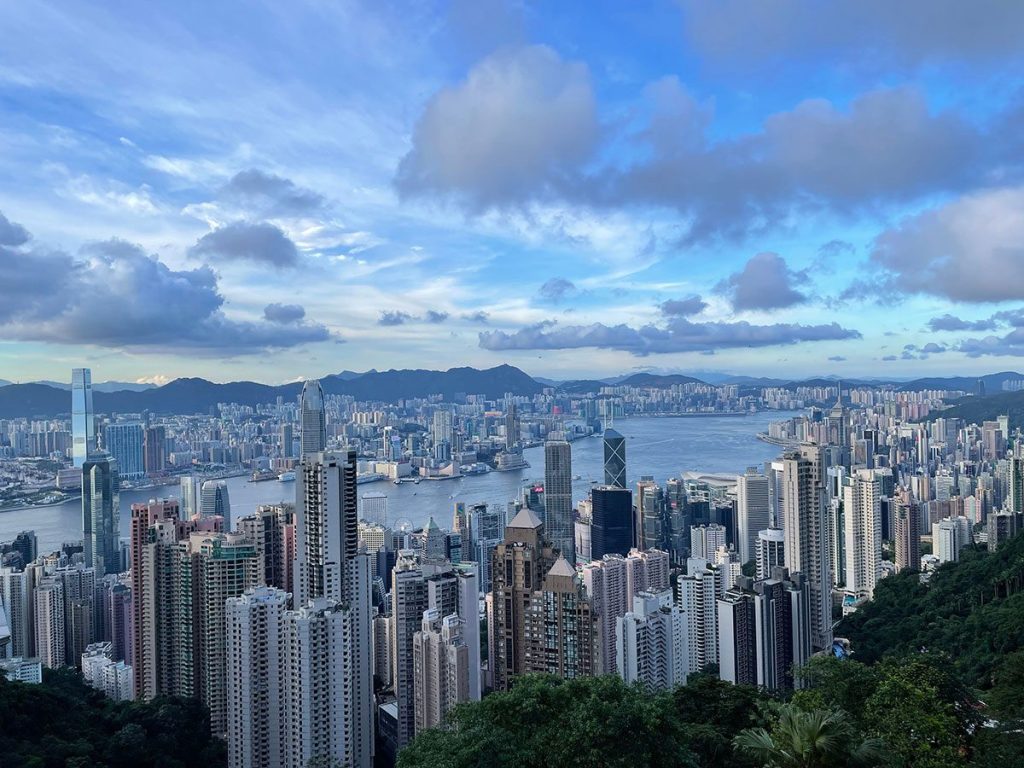
Experience the vibrant cityscape of Hong Kong’s Central District. Image source: Cheungjoproduction/Shutterstock.com
If you’re looking for a deep container port, go no further than Victoria Harbour. On one side of the harbor are the towering skyscrapers of Hong Kong island, while on the other lies the picturesque Tsim Sha Tsui waterfront. It’s also one of the world’s busiest ports, with hundreds of ferries, junks, and speedboats zipping up and down the coast every day. Known as one of the biggest permanent light and sound festivals in the world, the skyscrapers on both sides of Victoria Harbour put on a spectacular light display every night. Taking a ride on the Star Ferry is an excellent opportunity to observe the waterfront.
3. Forbidden City
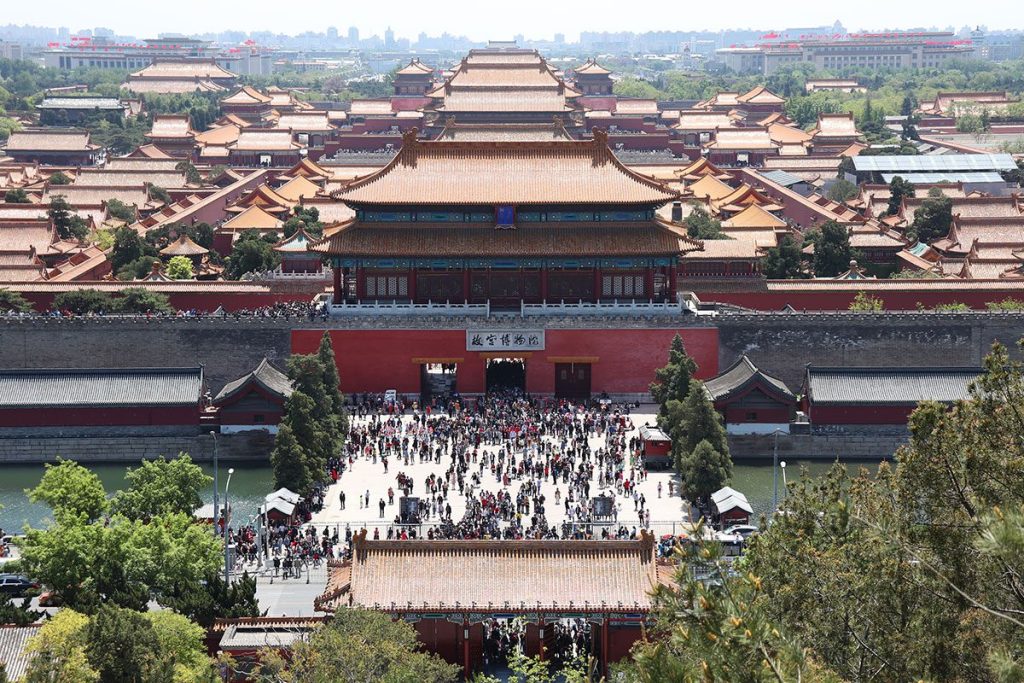
Discover the grandeur of Beijing’s iconic Forbidden City. Image source: Digital friends/Shutterstock.com
The Forbidden City was constructed in the early 15th century and was the official residence of Chinese emperors from the Ming and Qing dynasties until the abdication of Puyi in 1912. It is the biggest palace structure ever built, and it is completely enclosed by walls and a moat. The city is said to have 9999 rooms in its 980 buildings, but the real number is about a thousand less. With so many people visiting at once, it’s clear that this is Beijing’s most popular tourist destination.
2. Potala Palace
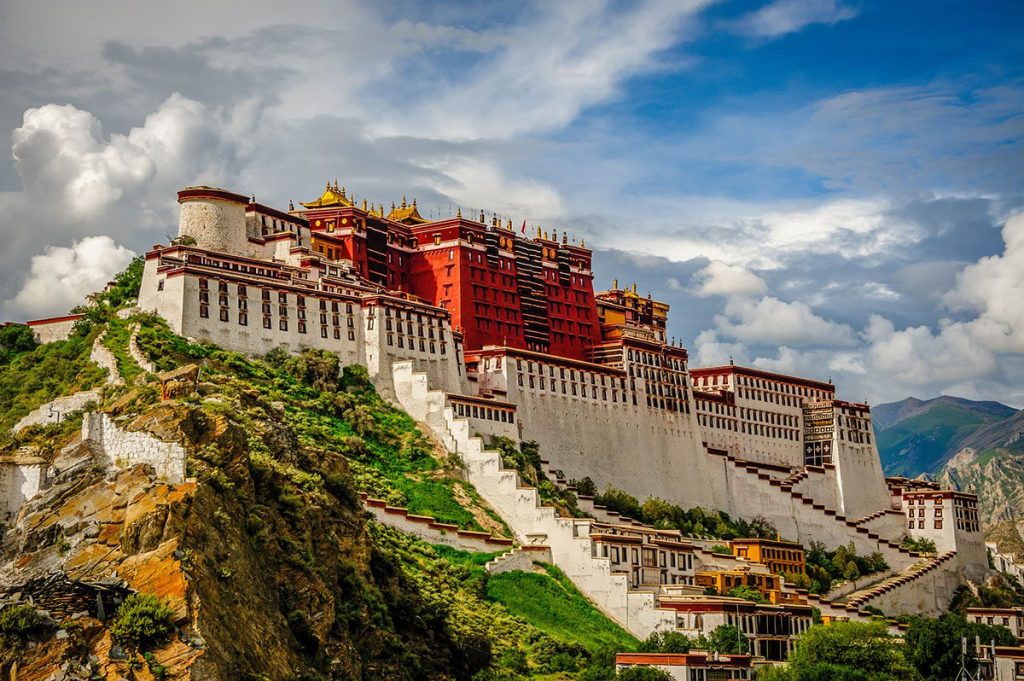
Behold the architectural wonder of the Potala Palace. Image source: hrui/Shutterstock.com
The Potala Palace in Lhasa has been the winter residence of the Dalai Lama since the 7th century, and has come to represent Tibetan Buddhism and its key position in the country’s traditional government. The Potala, with its more than a 1000 chambers, served as both the living quarters and the luxurious golden tombs of the Dalai Lamas throughout their lifetimes. This was the Dalai Lama’s home until 1959, when the 14th Dalai Lama fled to India in the face of a Chinese invasion. Rare cultural artifacts, such as gold Buddhist texts written by hand and presents from Chinese emperors, are also kept at the palace. The palace has 14 levels, so if you plan on going, you need to get in shape beforehand since you will be climbing a lot of steps.
1. Great Wall of China
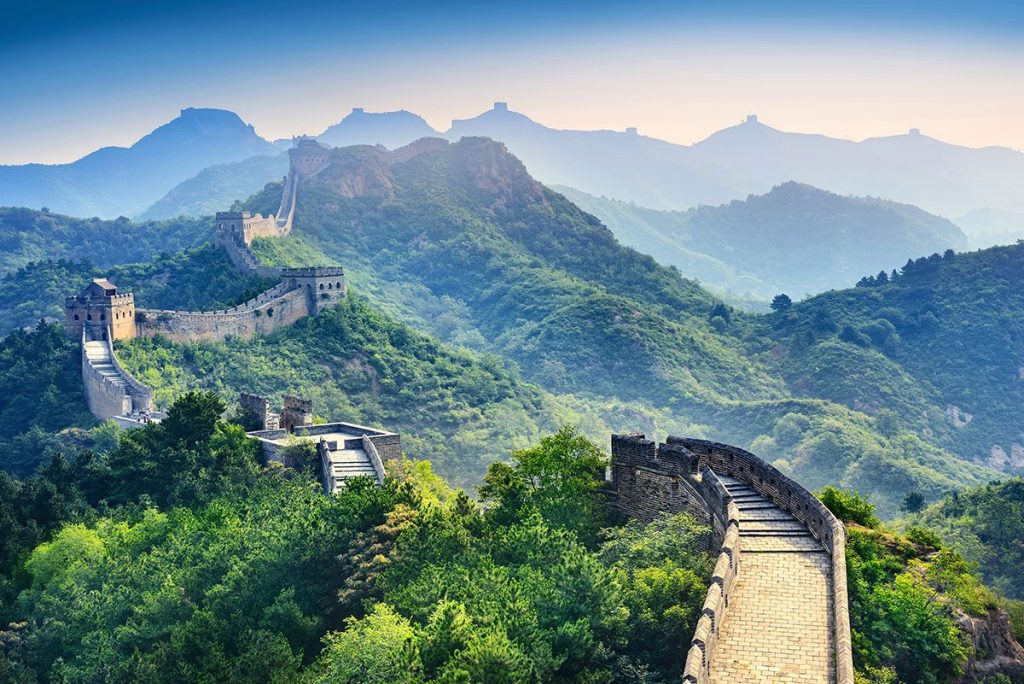
Stand in awe before the legendary Great Wall of China. Image source: aphotostory/Shutterstock.com
As the longest outdoor museum in the world, the Great Wall of China stretches from Shanhaiguan on the Bohai Sea in the east to Mutianyu in Gansu Province in the west. From the 5th century BC until the 16th century AD, it was constructed, reconstructed, and maintained to deter raids by northern nomads on the Chinese Empire’s northern frontier. The majority of tourists will see the wall in the Beijing region because it is more accessible there and because it winds majestically over the peaks of the surrounding mountains. It is the most visited site in all of China.


